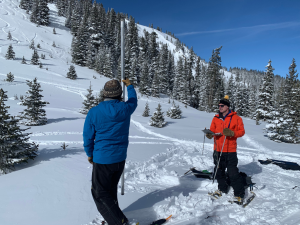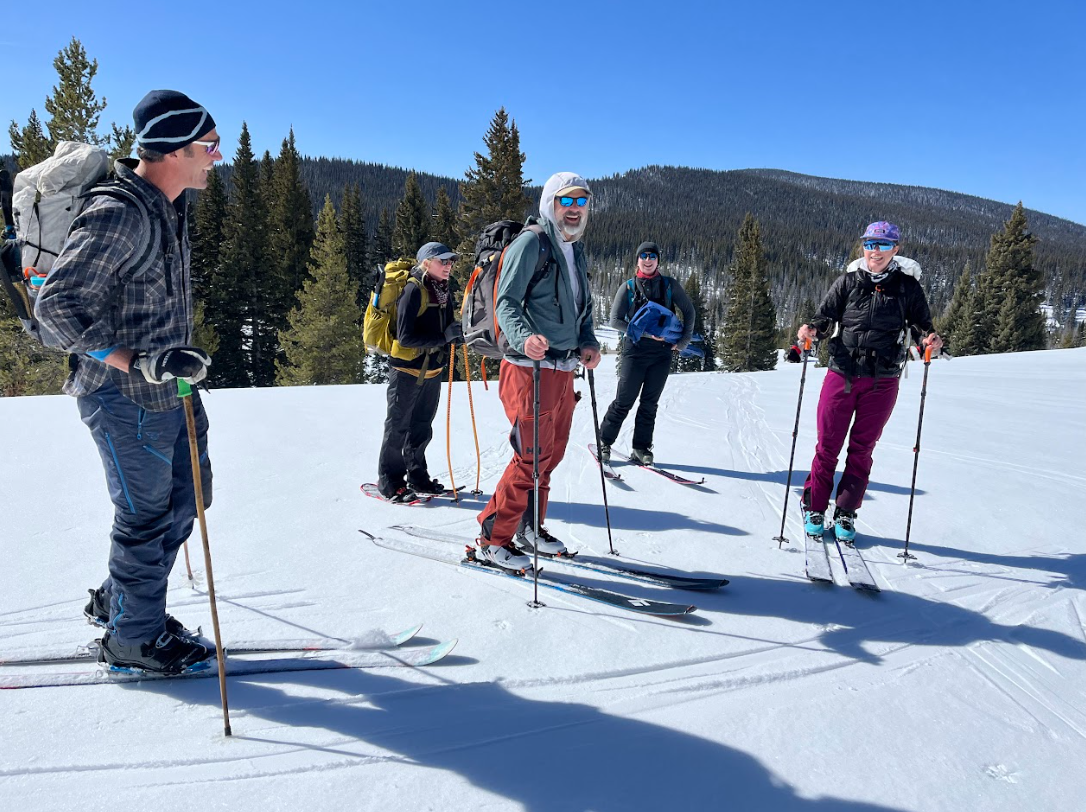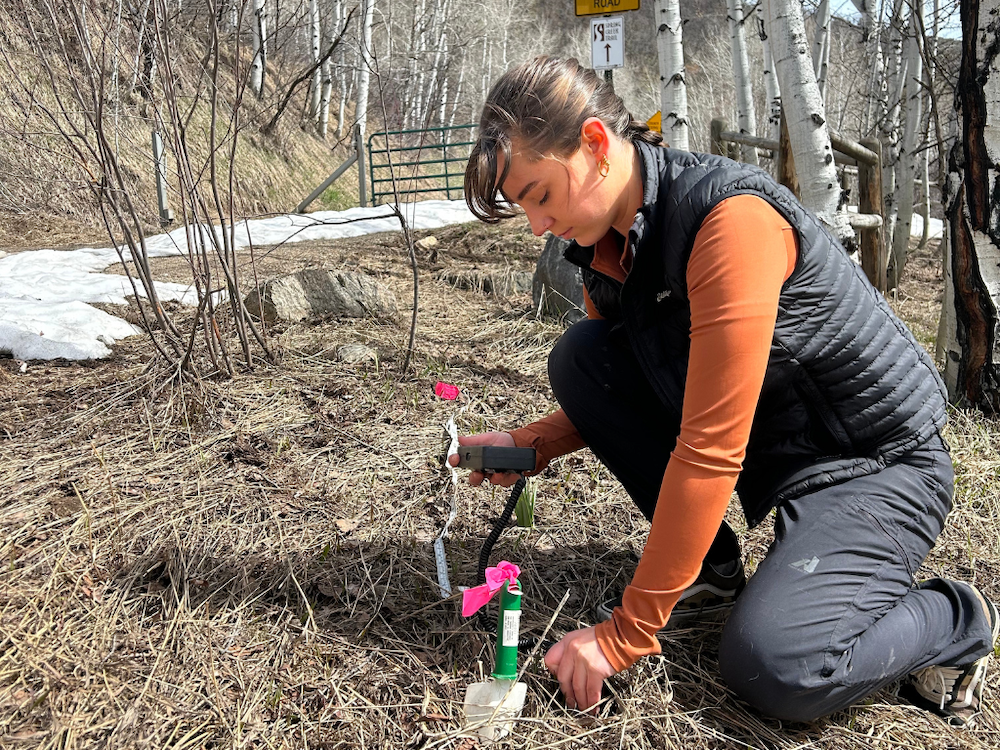Madison Muxworthy, Soil Moisture, Water and Snow Program Manager | February 9, 2023
In mid-January, I was fortunate to join the Natural Resource Conservation Service (NRCS) Colorado Snow Survey team for training on how they manually collect snowpack data for Colorado. This
training focused on the NRCS snow course program, in which NRCS staff take manual snowpack samples at designated locations throughout the winter. Data collected from the snow courses complement NRCS’s automated SNOTEL stations that collect data in real-time. These data are available on the NRCS website.
The Yampa River Basin is a snowmelt-dominated watershed – meaning that most of our water comes from our snowpack. Therefore, knowing how much water is held in our snowpack is critical for water planning. Thankfully, the winter in the Yampa Valley has been off to a great start. As of January 30, 2023, the Yampa-White River Basin Snow Water Equivalent (SWE) is 151% of the NRSC Median compared to the 1991-2020 period with 18.5 inches of SWE. SWE is the measurement of liquid water in the snowpack. It’s a standard metric used by water managers, climate scientists, water users, and citizens to understand snowpack and water availability.
Our 151% SWE is great, but we need to keep it in context. An important consideration when looking at these early winter numbers is that the baseline recently shifted. We are now using a new 30-year period of record from 1991 through 2020. This new decade includes some of the hottest years on record, so we are comparing current conditions to a hotter and drier average. This means a “good year” is a lower bar to reach in this new period of record, compared to our previous record.
We also remain in a 23-year-long megadrought that is gripping the Western United States. Climate scientists like Brad Udall from Colorado State University remind us that one good snowpack year will not be enough to change this. Udall recently stated in a KUNC article, “We need five or six years at 150% snowpack to refill [Lake Mead and Lake Powell]. And that is extremely unlikely.”
Additionally, our snowpack is no longer producing the runoff it used to. This is due to many factors, one of which is thought to be extremely dry soils. In recognition of this, YVSC partnered with the Center for Western Weather and Water Extremes and Colorado Mountain College, with funding from the Upper Yampa Water Conservancy District to plan for a network of Yampa Basin soil moisture and climate monitoring stations. The first station of the network was installed this past September, check out this Steamboat Pilot article that explains all about the project.
Data – like those collected by the NRCS and others – is critical to help us all make informed decisions as we adapt and build resilience in the face of climate change.
While this winter has brought a great amount of snow for skiing and generally enjoying outdoor sports, it’s still too early to make the call for a good runoff season. Research is pointing to the aridification of the Intermountain West, meaning that we are trending toward a more permanent drier climate. The good news is that local initiatives are underway to help us prepare, like YVSC’s Yampa River Forest Restoration Program and Yampa Valley Climate Crew projects that both help the Yampa Valley be more resilient to these changes.






